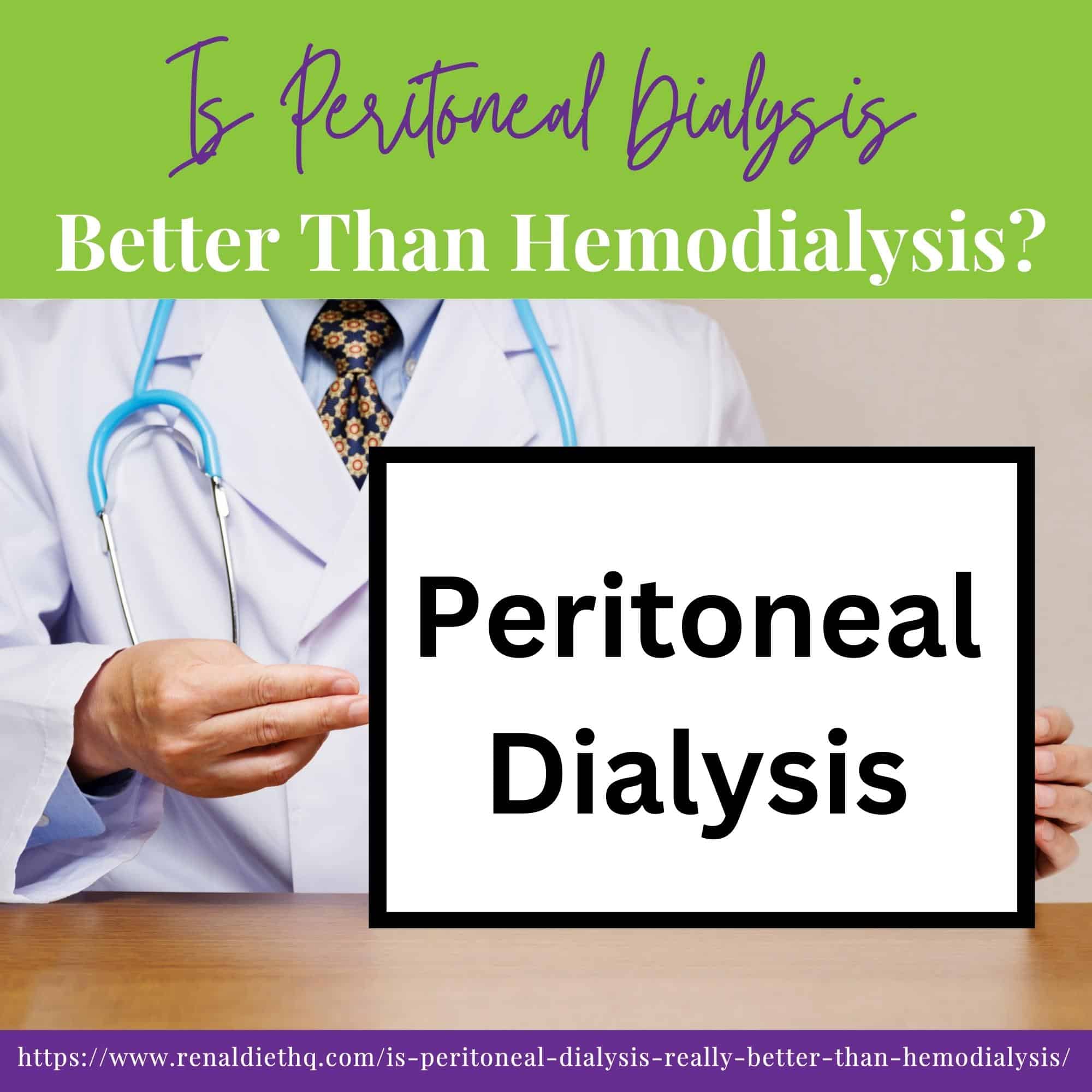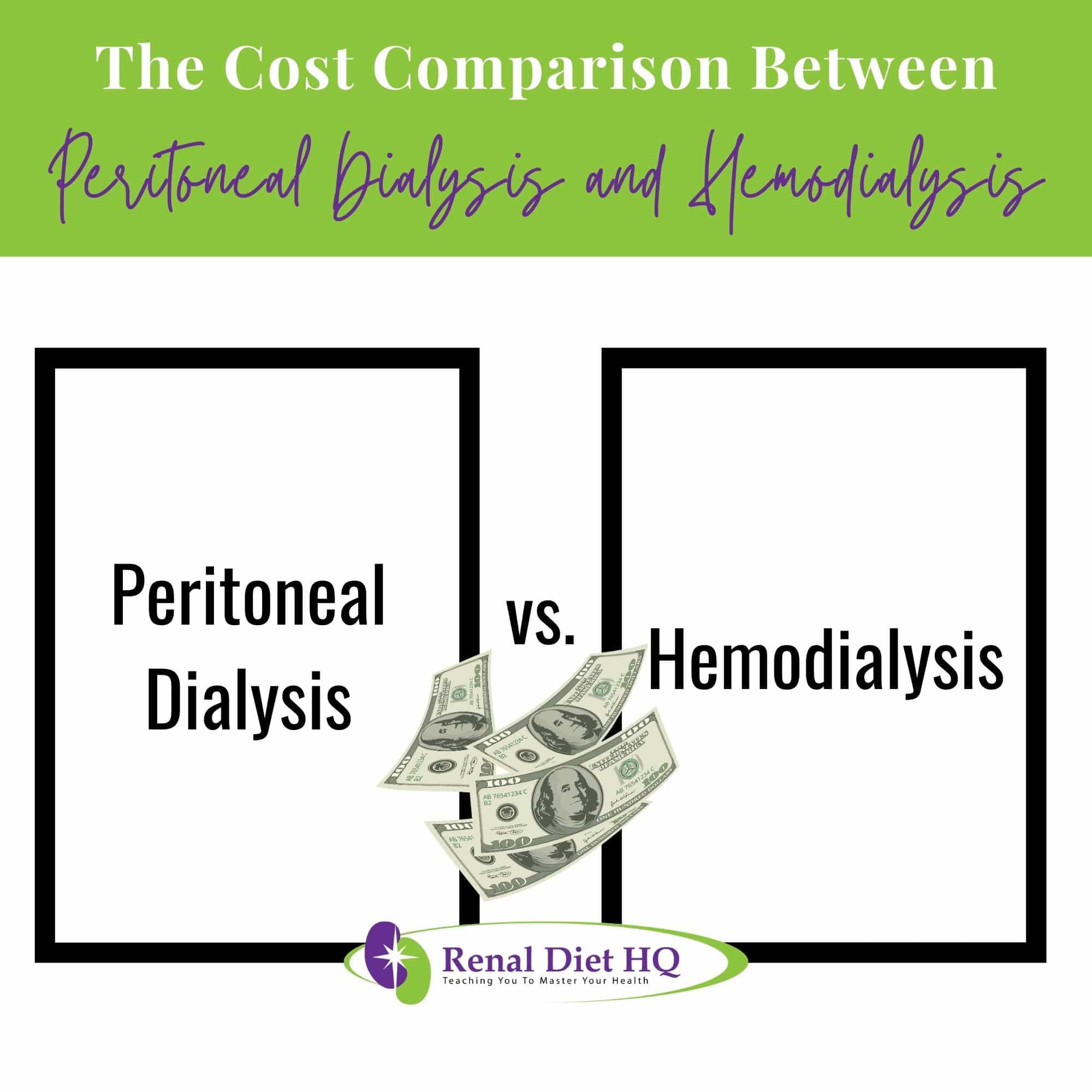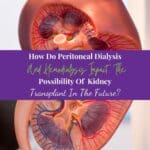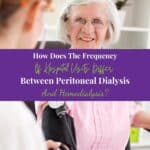Is Peritoneal Dialysis Better Than Hemodialysis
When it comes to kidney failure, two popular treatments are peritoneal dialysis (PD) and hemodialysis (HD). But which one's better? Well, that's not an easy question to answer. It depends on various factors including the patient's health condition, lifestyle needs, and financial situation.
In this article, we'll delve into the technicalities of each method, weigh their pros and cons, compare their efficiencies and costs, and share real patient experiences. By doing so, we aim to equip you with comprehensive knowledge to make informed decisions tailored to each individual patient's circumstances.
Remember - what's right for one may not be right for another. So let's dive in and explore these life saving therapies together!

Jump to:
- Key Takeaways
- Understanding the Basics of Peritoneal Dialysis and Hemodialysis
- The Pros and Cons of Peritoneal Dialysis
- The Pros and Cons of Hemodialysis
- Comparing the Efficiency of Peritoneal Dialysis and Hemodialysis
- How Dialysis Efficiency Is Measured
- The Impact of Dialysis Choice on Lifestyle and Freedom
- How Dialysis Choice Affects Diet and Nutrition
- The Role of Personal Health Condition in Choosing Dialysis Type
- The Cost Comparison Between Peritoneal Dialysis and Hemodialysis
- Patient Experiences with Peritoneal Dialysis and Hemodialysis
- Making the Right Dialysis Choice for You
- Frequently Asked Questions
- PD or HD? The Choice Is Up To You!
Key Takeaways
- Peritoneal dialysis patients often have fewer fluid restrictions compared to hemodialysis patients.
- Factors such as disease progression, emotional well-being, mobility issues, and family support influence the choice between PD and HD.
- The cost comparison between PD and HD includes direct costs (equipment, supplies, and healthcare fees) and indirect costs (transportation and home modifications).
- Patient experiences of dialysis include challenges, psychological stress, the importance of empathetic support and mental health resources, family involvement, and advancements in technology.
For More Recipes and Ideas --->> Get Your Free Meals and Recipes That Are Perfect for Pre-Dialysis Diets, Pre-Dialysis with Diabetes, or Dialysis Diets.
Understanding the Basics of Peritoneal Dialysis and Hemodialysis
Peritoneal Dialysis (PD) and Hemodialysis (HD) are two main methods of renal replacement therapy used to treat end-stage kidney disease (ESKD) when the kidneys are no longer able to function adequately.
Renal replacement therapy which may be in the form of dialysis or kidney transplant are necessary at this stage of chronic kidney disease. Both treatments aim to remove waste products and excess fluids from the body that the impaired kidneys cannot filter out effectively. It's important to know what a fluid restricted diet menu is!
Peritoneal Dialysis:
PD involves using the peritoneum, a membrane lining the abdominal cavity, as a natural filter. A catheter is surgically inserted into the abdomen, and a dialysis solution (dialysate) is introduced into the peritoneal cavity.
Waste products and excess fluids from the blood pass through the peritoneum into the dialysate, which is later drained out, taking the waste with it.
There are two types of PD: Continuous Ambulatory Peritoneal Dialysis (CAPD), where manual exchanges are performed several times a day, and Automated Peritoneal Dialysis (APD), which uses a machine for automated exchanges during sleep.
Hemodialysis:
HD involves using an artificial kidney or dialyzer to filter the blood. The patient's blood is drawn through a vascular access point, such as an arteriovenous fistula or graft or a venous catheter.
It is then purified by the dialyzer, which removes waste products and excess fluids, and the cleaned blood is returned to the patient's body. HD sessions are typically performed three times a week, lasting several hours per session, at a dialysis center.
The choice between PD and HD depends on various factors, including the patient's medical condition, lifestyle, and preference. PD offers more flexibility and can be done at home, whereas HD requires regular visits to a dialysis center.
Both treatments have their benefits and potential complications, and patients should discuss the options thoroughly with their healthcare team to determine the most suitable approach for their individual needs.

The Pros and Cons of Peritoneal Dialysis
Peritoneal Dialysis (PD) offers several advantages and disadvantages as a renal replacement therapy for individuals with end-stage kidney disease.
Pros of Peritoneal Dialysis:
- Flexibility and Convenience: PD can be performed at home, offering more flexibility and independence compared to Hemodialysis (HD), which requires frequent visits to a dialysis center.
- Continuous Therapy: PD provides continuous dialysis, which means toxins and waste products are removed more consistently throughout the day, potentially leading to better fluid and waste control.
- Lesser Dietary Restrictions: PD may allow for a more liberal diet since it provides continuous clearance, reducing the need for strict dietary restrictions compared to HD.
- Fewer Vascular Access Complications: PD uses a catheter in the abdomen, reducing the risk of permanent access complications associated with HD.
Cons of Peritoneal Dialysis:
- Infection Risk: The peritoneal catheter creates a direct pathway to the abdomen, increasing the risk of infection, such as peritonitis, if proper sterile technique is not followed.
- Volume Limitations: PD may not be suitable for end stage renal disease patients with certain medical conditions or individuals with inadequate peritoneal membrane function, as it may not provide adequate dialysis efficiency.
- Weight Gain and Glucose Absorption: Some peritoneal dialysis patients may experience weight gain and increased blood sugar levels due to the glucose-based dialysate used in PD.
- Peritoneal Membrane Changes: Over time, the peritoneal membrane may undergo changes, reducing dialysis efficiency, and potentially limiting the long-term effectiveness of PD.
- Continuous Presence of Dialysis Fluid: PD requires the continuous presence of dialysis fluid in the abdomen, which some patients may find uncomfortable.
Peritoneal Dialysis offers convenience, continuous therapy, and fewer vascular access complications but may carry a higher risk of infection, have volume limitations, and present other potential drawbacks.
Each dialysis patient's medical condition, lifestyle, and preferences should be considered when deciding whether PD is the most appropriate form of dialysis for them. Close monitoring and regular follow-ups with a healthcare team are crucial to optimize the benefits and address any concerns with PD therapy.
The Pros and Cons of Hemodialysis
Hemodialysis is an effective renal replacement therapy for individuals with end-stage kidney disease. Like any medical treatment, HD has its advantages and disadvantages.
Pros of Hemodialysis:
- Effective Waste Removal: HD efficiently removes waste products, toxins, and excess fluids from the bloodstream, helping to maintain electrolyte balance and manage fluid levels.
- Short Treatment Duration: HD sessions typically last a few hours and are performed three times a week, making it a suitable option for those who prefer a structured treatment schedule.
- Professional Monitoring: HD is performed in a dialysis center under the supervision of trained medical staff, allowing for continuous monitoring of patients' vital signs and immediate access to medical assistance if needed.
- No Continuous Presence of Dialysate: Unlike Peritoneal Dialysis, HD does not require the continuous presence of dialysate in the body, potentially leading to a more comfortable experience for some patients.
- Lower Infection Risk: HD does not involve the insertion of a peritoneal catheter, reducing the risk of peritonitis and other catheter-related infections.
Cons of Hemodialysis:
- Time Commitment: HD sessions require regular visits to a dialysis center, which can be time-consuming and may disrupt daily routines.
- Dietary Restrictions: Patients on HD often need to follow strict dietary restrictions to manage fluid, potassium, phosphorus, and sodium levels, which can be challenging.
- Vascular Access Issues: Long-term use of long term HD access points (e.g., fistulas, grafts, catheters) can lead to complications such as infection, stenosis, or thrombosis.
- Fluid Shifts: Rapid removal of fluids during HD may cause blood pressure changes and discomfort, and in some cases, may necessitate the administration of intravenous fluids.
- Intradialytic Symptoms: Some chronic dialysis patients experience "intradialytic symptoms" such as fatigue, muscle cramps, or nausea during HD sessions.
The decision to choose Hemodialysis as a treatment option depends on factors like the patient's overall health, lifestyle, and preferences, and it should be made in consultation with their healthcare team.
Close monitoring and adherence to the prescribed treatment plan can optimize the benefits of HD and improve the patient's quality of life.
Comparing the Efficiency of Peritoneal Dialysis and Hemodialysis
The study titled "Comparative Analysis of Efficacy and Prognosis of Hemodialysis and Peritoneal Dialysis for End-Stage Renal Disease: A Meta-analysis" provides valuable insights into the efficiency of Peritoneal Dialysis and Hemodialysis in treating end-stage renal disease (ESRD).
The meta-analysis suggests that both PD and HD can improve renal function in uremic patients, but it found certain advantages of PD over HD.
According to the study, PD was found to be superior to HD in reducing the incidence of adverse reactions. This could be attributed to the continuous and gentle nature of waste removal in PD, which may lead to fewer interdialytic symptoms and blood pressure fluctuations compared to HD.
Additionally, the meta-analysis indicates that PD showed better outcomes in terms of improving the nutritional status of patients. PD allows for a more liberal diet due to its continuous clearance, which may contribute to better nutrition in peritoneal dialysis patients and potentially impact overall health positively.
Moreover, the study suggests that these advantages of PD might translate into improved quality of life for patients. By reducing adverse reactions and supporting better nutritional status, peritoneal dialysis patients may experience a better overall well-being and enhanced quality of life compared to HD patients.
However, it is important to acknowledge that the choice between PD and HD should be personalized and based on individual factors such as the patient's medical condition, lifestyle, and preferences.
Both PD and HD have their unique characteristics and benefits, and the selection should be made in consultation with a healthcare team to optimize renal function, manage symptoms, and improve the patient's overall health and quality of life.
In conclusion, the mentioned meta-analysis provides evidence that both PD and HD can effectively improve renal function in ESRD patients.
While PD demonstrated advantages over HD in reducing adverse reactions, improving nutritional status, and potentially enhancing quality of life, the choice between the two treatments should be carefully considered on a case-by-case basis to ensure the best possible outcomes for each patient.
How Dialysis Efficiency Is Measured
Dialysis efficiency for both Peritoneal Dialysis (PD) and Hemodialysis (HD) is measured by various parameters that assess the effectiveness of waste removal, fluid control, and overall patient well-being. The key measurements for each modality are as follows:
Peritoneal Dialysis Efficiency:
- Peritoneal Equilibration Test (PET): This test evaluates the efficiency of solute transport across the peritoneal membrane. It measures the rate at which waste products (e.g., creatinine, urea) move from the bloodstream into the dialysate and vice versa. PET results are used to categorize peritoneal dialysis patients into different transporter types, guiding individualized PD prescriptions.
- Dialysate Drain Volume: The volume of dialysate drained from the peritoneal cavity during exchanges indicates the removal of excess fluids. Adequate fluid removal is crucial to prevent volume overload and related complications.
- Ultrafiltration Rate (UFR): UFR measures the amount of fluid removed during a PD exchange, indicating the effectiveness of fluid control. Maintaining an appropriate UFR is essential to avoid dehydration or overhydration.
- Peritoneal Clearance: Peritoneal clearance represents the rate at which waste products are cleared from the bloodstream during PD. High peritoneal clearance indicates efficient waste removal.
Hemodialysis Efficiency:
- Kt/V: This parameter assesses the efficiency of solute removal during HD. K represents the dialyzer clearance of waste products, t is the duration of the HD session, and V is the volume of distribution of these waste products in the patient's body. A higher Kt/V value indicates better solute removal.
- URR (Urea Reduction Ratio): URR measures the percentage of urea reduction in the blood after a HD session. It is an indicator of overall solute removal efficiency.
- Single Pool Kt/V (spKt/V): spKt/V is a modified version of Kt/V, focusing on urea removal. It considers a single compartment of urea distribution, simplifying the calculation.
- Blood Pressure Stability: HD efficiency can also be evaluated based on blood pressure stability during and after the treatment. Effective fluid removal and waste clearance contribute to stable blood pressure levels.
Efficiency measurements are crucial for optimizing dialysis prescriptions and ensuring patients receive adequate treatment. Regular monitoring of these parameters allows health professionals to tailor treatment plans, addressing individual patient needs and achieving better outcomes in both PD and HD therapies.
The Impact of Dialysis Choice on Lifestyle and Freedom
Choosing the right type of treatment can greatly affect your sense of freedom and lifestyle, as it's not merely about medical efficiency but also how well it meshes with your daily routines. When considering peritoneal dialysis versus hemodialysis, certain patient factors should be considered that extend beyond their medical effectiveness.
- Traveling restrictions: PD may grant you more flexibility for traveling because treatments are portable and can be performed anywhere with a clean environment.
- Emotional wellbeing: Both types of dialysis have significant psychological impacts, but studies suggest PD might cause less emotional stress due to its greater autonomy.
- Work life balance: With PD, you can continue working while undergoing treatment at home or work, whereas HD typically requires hospital visits three times a week.
- Social interactions and Exercise limitations: Socializing is easier with PD as there's no need to schedule around hospital appointments; exercise is also more manageable since energy levels remain steadier throughout the day.
The choice between peritoneal dialysis and hemodialysis isn't just about medical outcomes - it's also about preserving your quality of life in ways that matter most to you: maintaining meaningful relationships, pursuing passions, ensuring mental health stability, and embracing the joy of everyday activities without unnecessary hindrance.
How Dialysis Choice Affects Diet and Nutrition
Your daily menu might see some significant changes depending on the type of kidney treatment you're undergoing, as each has its own dietary considerations and restrictions.
For instance, peritoneal dialysis typically requires more protein intake due to losses during dialysis exchanges. This would mean incorporating more high-protein foods into your meals or considering supplement usage.
Nutrition challenges are common with both types of dialysis but can be managed with careful planning and dietary adjustments.
With hemodialysis (HD), you'll face fluid restrictions that limit how much liquid you can consume in a day. This may lead to creative approaches to quenching thirst without overloading your system.
On the other hand, PD patients often have fewer fluid restrictions, which could make meal planning a bit easier. However, they must monitor their sugar levels closely since PD solutions contain glucose.
That said, regular consultations with a dietitian experienced in kidney care are usually necessary for both HD and PD patients to ensure nutritional needs are met effectively.
Remember that each dialysis option comes with unique dietary considerations. Tailoring your food choices around these factors will greatly assist in managing your health while on treatment.
The Role of Personal Health Condition in Choosing Dialysis Type
It's vital to keep in mind that individual health conditions play a pivotal role in determining the most suitable kidney treatment for you. Your disease progression, emotional well-being, and mobility issues significantly impact the choice between peritoneal dialysis and hemodialysis.
| Factors Influencing Dialysis Type | Description |
| Disease Progression | The stage of your kidney disease determines the urgency and intensity of treatment required. |
| Emotional Well Being | Your mental health plays a crucial role in coping with either dialysis method. |
| Mobility Issues | Hemodialysis requires frequent travel to a dialysis clinic, while peritoneal dialysis can be done at home. |
Family support is another essential factor as both treatments require an extent of assistance, whether it's transportation for hemodialysis or setup for peritoneal dialysis at home. Medical supervision also differs; hemodialysis is performed under direct medical professional oversight whereas peritoneal allows more independence but still needs regular check-ups.
The above factors highlight why patient-specific consideration is indispensable when deciding between these two forms of dialysis. Understanding your personal health condition and lifestyle will guide you towards making an informed decision that serves your best interest.

The Cost Comparison Between Peritoneal Dialysis and Hemodialysis
Financial aspects can significantly sway your decision when it comes to selecting the right kidney treatment. When comparing peritoneal dialysis (PD) and hemodialysis (HD), it's important to take into account both direct and indirect costs.
Direct costs include those related to the procedure itself, such as equipment, supplies, and health care provider fees. Insurance coverage plays a vital role here. Most insurance plans cover dialysis treatments, but the extent of coverage may differ for PD and HD. It's crucial to check with your insurer about these details before making a decision.
Indirect costs are expenses not directly linked to the treatment but still impact your budget. These can include travel considerations like transportation costs to and from dialysis facilities for HD or home modifications needed for PD. Furthermore, you might need financial assistance for incidental expenses like dietary changes or medications not covered by insurance.
You should also consider potential lost income if you have to reduce work hours due to treatment schedules or health complications. Hence, while one type of dialysis may seem cheaper at first glance, taking a broader view of all associated costs is essential in making an informed choice.
Patient Experiences with Peritoneal Dialysis and Hemodialysis
Patient experiences with Peritoneal Dialysis (PD) and Hemodialysis (HD) can vary widely and are influenced by various factors such as treatment duration, lifestyle adjustments, and overall health conditions. Here are some common patient experiences with each modality:
Peritoneal Dialysis (PD) Experiences:
- Home-based Convenience: Many PD patients appreciate the flexibility of performing treatments at home, allowing them to maintain their daily routines and reduce the need for frequent visits to a dialysis clinic.
- Independence and Control: PD empowers patients to have more control over their treatment, including the ability to perform exchanges themselves and adjust schedules according to their preferences.
- Potential Discomfort: Some patients may experience discomfort or difficulty during the initial catheter insertion or while performing exchanges, which can impact their overall experience with PD.
- Fear of Infection: PD patients need to be vigilant about maintaining sterile technique during exchanges to avoid peritonitis or other infections, which can lead to anxiety or stress.
- Impact on Sleep: Automated Peritoneal Dialysis (APD) may disrupt sleep patterns due to the noise of the cycler, potentially affecting the quality of sleep for some patients.
Hemodialysis (HD) Experiences:
- Dialysis Center Environment: HD patients typically spend several hours, multiple times a week, at a dialysis center, which may be a significant lifestyle adjustment, impacting their daily activities and social life.
- Interaction with Healthcare Professionals: HD patients often build strong relationships with the healthcare team at the dialysis center, providing them with a sense of support and care during their treatments.
- Intradialytic Symptoms: Some HD patients may experience intradialytic symptoms such as fatigue, nausea, or muscle cramps, which can affect their well-being during dialysis sessions.
- Vascular Access Concerns: Long-term use of vascular access points may pose challenges, and patients may need to manage potential complications like infection or stenosis.
- Dietary Restrictions: HD patients often have to adhere to strict dietary restrictions to manage fluid, potassium, and phosphorus levels, which can be challenging and impact their enjoyment of food.
Overall, patient experiences with PD and HD are unique and influenced by individual circumstances. Open communication with the healthcare team, adequate support, and adherence to the prescribed treatment plan can play a crucial role in enhancing the patient's satisfaction and well-being with either dialysis modality.
Making the Right Dialysis Choice for You
Choosing the right treatment option for kidney failure isn't always straightforward. You've got to consider your lifestyle, health condition, and personal comfort. There is no one-size-fits-all answer when it comes to choosing between peritoneal dialysis and hemodialysis.
This decision is deeply personal and should be made after considering dialysis alternatives like transplantation and home dialysis options like nocturnal or short daily sessions, as well as the psychosocial impacts of each choice.
Here are three key considerations when making your choice:
- Psychosocial Impacts: Consider how each type of dialysis will affect your emotional well-being and social life. Some people find home treatments less disruptive to their daily lives.
- Caregiver Support: If you choose home dialysis options, ensure you have a strong support system in place as this can demand significant commitment from caregivers.
- Advanced Planning: Plan ahead for potential changes in your health status that might necessitate switching types of dialysis.
Remember that what works best for one patient may not be ideal for another due to different medical conditions or lifestyles. Always take time to weigh your options carefully with your healthcare team before making any final decisions about dialysis treatments. It's all about finding a balance that works best for you!
Frequently Asked Questions
My doctor prescribed a renal diet. The average life expectancy for patients undergoing peritoneal dialysis is generally similar to that of patients on hemodialysis. Studies have shown that both modalities can provide effective renal replacement therapy and improve the quality of life for patients with end-stage renal disease.
However, life expectancy can vary based on individual factors such as age, overall health condition, comorbidities, and adherence to the prescribed treatment plan.
Regular medical follow-ups, proper management of underlying health conditions, and adherence to dietary and fluid restrictions can all influence life expectancy in patients undergoing either PD or HD.
The frequency of hospital visits differs between peritoneal dialysis and hemodialysis.
Patients on PD generally have fewer hospital visits because PD is often performed at home, reducing the need for frequent trips to a dialysis center. PD allows for continuous and flexible dialysis treatment, leading to fewer emergency hospital visits.
In contrast, patients on HD typically need to visit a dialysis center multiple times per week for their treatments, which can result in more frequent hospital visits for routine dialysis sessions. However, the actual frequency of hospital visits can vary depending on individual patient needs and any underlying health conditions. Keep in mind that a diet for renal dialysis patients can be easy to follow.
Yes, both peritoneal dialysis and hemodialysis can have specific psychological impacts on patients. PD patients often report feeling more in control of their treatment since it can be performed at home, leading to increased independence and a sense of empowerment. On the other hand, HD patients may experience feelings of dependency on the dialysis center due to frequent visits.
Both modalities can cause stress and anxiety related to treatment procedures, potential complications, and lifestyle adjustments. Learning how to reduce stress naturally is also important.
Additionally, dealing with chronic illness and the need for ongoing dialysis can lead to emotional challenges, highlighting the importance of psychological support for patients on both PD and HD.
Yes, patients can switch from peritoneal dialysis to hemodialysis or vice versa based on their medical condition, lifestyle changes, or treatment preferences. The switch can offer benefits and risks. Switching from PD to HD may require patients to adapt to a new treatment environment, more frequent visits to a dialysis center, and potential vascular access issues.
However, HD may provide better solute clearance for some patients. Switching from HD to PD may offer more flexibility and independence but requires patients to learn new techniques and adhere to a home-based schedule. The decision should be made in consultation with the healthcare team to optimize individual outcomes.
Questions about kidney transplant? Both peritoneal dialysis and hemodialysis can impact your eligibility for a kidney transplant. They can also affect the compatibility between you and potential donors. Preparing for a transplant while on dialysis requires careful management and monitoring of your health.
It is important to maintain good overall health to increase your chances of a successful transplant. Your medical team will guide you through this process and help you achieve the best possible outcome for your future kidney health.
PD or HD? The Choice Is Up To You!
The choice between peritoneal dialysis and hemodialysis is complex, depending on health condition, lifestyle, and financial considerations. Both have pros and cons, with peritoneal dialysis showing advantages in reducing adverse reactions and improving nutrition. You may want to take the time for also learning renal dialysis diet vs non renal dialysis diet.
Patient experiences vary, affecting lifestyle, freedom, and diet. Considering travel flexibility, emotional well-being, work-life balance, and social interactions is crucial. Cost comparison should factor in direct and indirect expenses and insurance coverage.
Personalization is key, and advanced planning is necessary for potential health changes. The goal is to find a balance that optimizes health, quality of life, and overall satisfaction with the chosen dialysis treatment.













